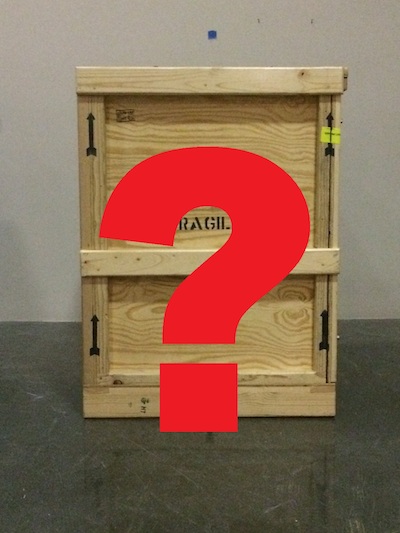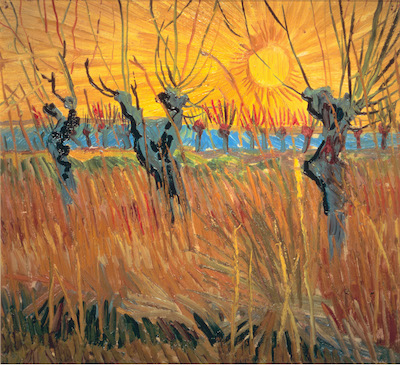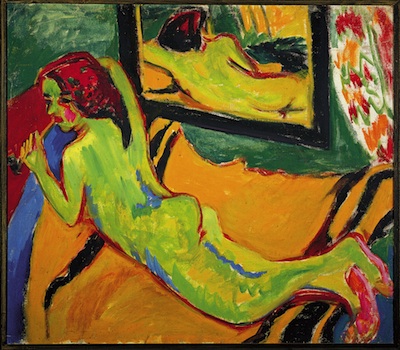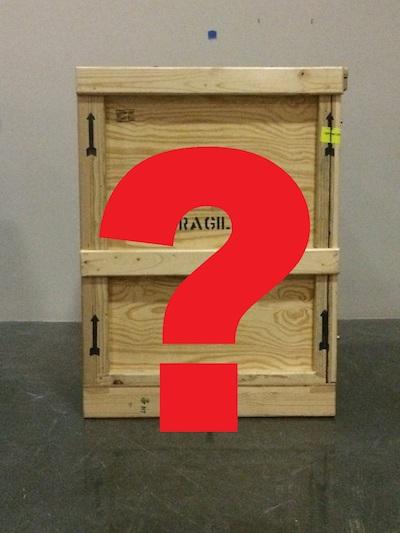Is there a Van Gogh hiding in this crate? Or maybe a Kandinsky or a Kirchner? It is hard to describe the excitement you feel when you unpack the numerous crates, in which these artworks travel, arriving from major institutions all around the word: New York, Washington, D.C., Paris, Berlin, Madrid, Zurich . . .
Even if you have seen most of these works—paintings drawings and prints—on the walls of museums before, to see them coming out of their crates and waiting to be hung on the wall in the huge exhibition space of the Resnick Pavilion is a very special kind of thrill. It is particularly delightful to discover the bright and bold colors used by painters such as Gauguin, Van Gogh, Erich Heckel, Ernst Ludwig Kirchner, Gabriele Münter, Max Pechstein, Henri Matisse, Paul Signac—something that is often difficult to capture in reproductions. But to see the subtle use of bright greens, white highlights, flamboyant reds and sunny yellows and to notice the vigorous brushstrokes used by painters like Kirchner, Pechstein, or Van Gogh is a very special kind of pleasure.

The reason why we are having all these wonderful pieces coming to LACMA, is the upcoming exhibition Expressionism in Germany and France: From Van Gogh to Kandinsky. This exhibition will assemble major works by artists from Germany, France, Russia, and other countries, who were seeking a new visual language at the beginning of the 20th century, developing almost simultaneously Expressionism, Fauvism, followed by Cubism. In this attempt, they were looking toward modern masters such as Vincent van Gogh, Paul Gauguin, and Paul Cézanne and found inspiration in their bold use of color, the deconstruction of form and space, and in the turn toward a subjective vision of the world. The exhibition is a testimony to this exceptional cultural and artistic dialogue, which took place before World War I between artists based in France and Germany.
 The exhibition's title wall. Photo courtesy of and © Frauke Josenhans
The exhibition's title wall. Photo courtesy of and © Frauke Josenhans
For a major international loan exhibition such as this one, presented at different venues, the workload is quite enormous—the exhibition first opened with a slightly different selection of works at the Kunsthaus Zürich, and it will then travel to the Montreal Museum of Fine Arts, where the exhibition opens in October. The weeks preceding the opening of the exhibition are the busiest; the construction of the gallery space is finished, the walls are painted* and the crates are waiting to get unpacked. New works are being delivered every day, and each day, more and more paintings and prints go up on the wall.
 Vincent van Gogh, Pollard Willows at Sunset (Saules au coucher du soleil, Arles), 1888, Kröller‑Müller Museum, Otterlo, The Netherlands, Photo Credit: Art Resource, NY
Vincent van Gogh, Pollard Willows at Sunset (Saules au coucher du soleil, Arles), 1888, Kröller‑Müller Museum, Otterlo, The Netherlands, Photo Credit: Art Resource, NY
 Ernst Ludwig Kirchner, Reclining Nude in Front of Mirror (Liegender Akt vor Spiegel), 1909–10, Brücke‑Museum, Berlin © Ernst Ludwig Kirchner, Courtesy Ingeborg & Dr. Wolfgang Henze-Ketterer, Wichtrach/Bern Photo © Brücke-Museum, Berlin
Ernst Ludwig Kirchner, Reclining Nude in Front of Mirror (Liegender Akt vor Spiegel), 1909–10, Brücke‑Museum, Berlin © Ernst Ludwig Kirchner, Courtesy Ingeborg & Dr. Wolfgang Henze-Ketterer, Wichtrach/Bern Photo © Brücke-Museum, Berlin
During installation, the exhibition galleries resemble an anthill; art preparators, expert art handlers and paper and painting conservators are being busy making sure that the artworks are handled properly and that they are all in good condition (every move represents a potential danger to the artwork). Electricians are adjusting the lights to the adequate light level, designers are placing the numerous wall graphics and registrars are overseeing everything, making sure that the installation is going according to the schedule and that artworks are delivered and unpacked properly; couriers of the different lending museums are waiting in line to see their artwork safely hung up on the wall. And the curators, well, they place and replace the artworks, making last-minute changes and keeping everyone very busy! Installing an exhibition is a team effort and you will be able to discover the wonderful result of years of work in a few days!
 Photo courtesy of and © Frauke Josenhans
Photo courtesy of and © Frauke Josenhans
*For the design of the show, here is a little bit of insight: you might notice that the walls in the gallery are painted in two different shades: a dark grey and blue. These colors have been chosen very carefully. Indeed echoes of the blue in the central spine—the so-called Paris-spine—can also be found in some of the adjacent galleries. The blue highlights works that were shown in Paris—either in exhibitions or at galleries—and could have been seen by German artists traveling to France.
Frauke Josenhans, Curatorial Assistant, Robert Gore Rifkind Center for German Expressionist Studies



